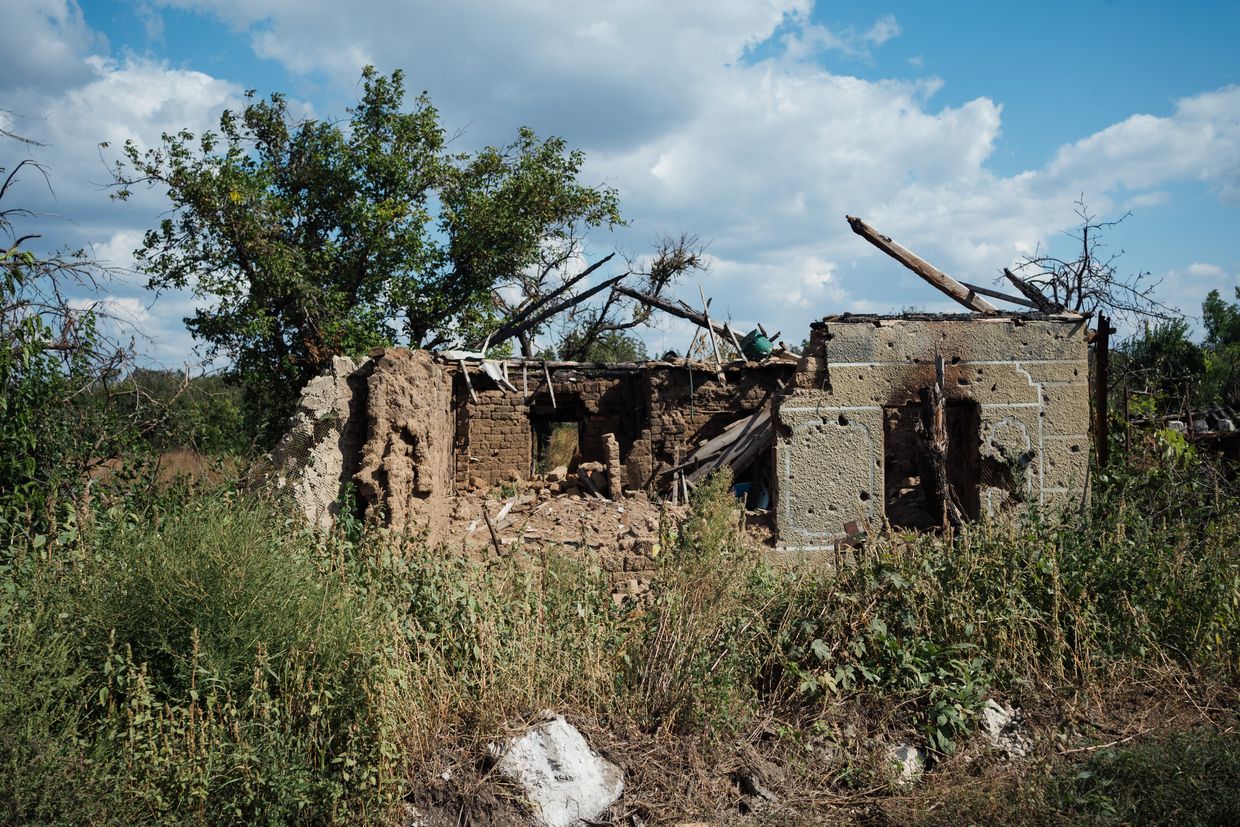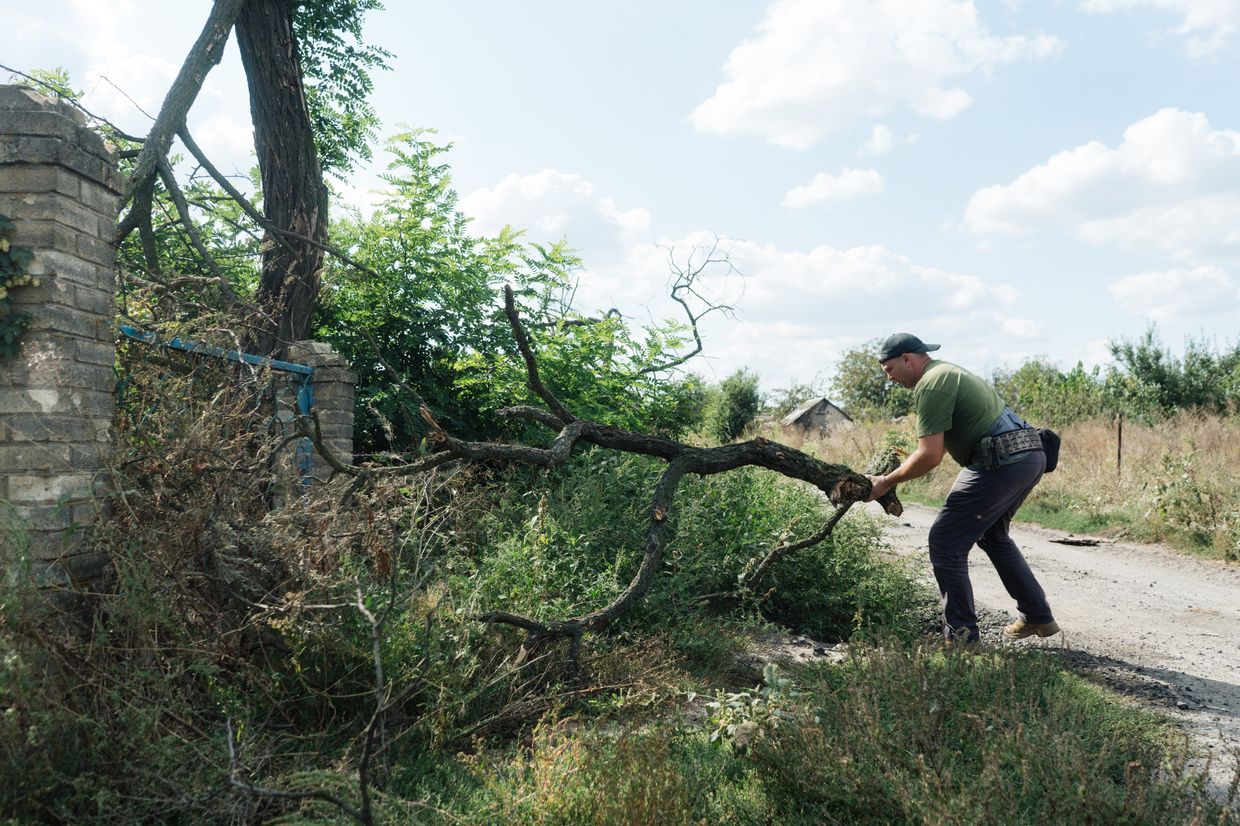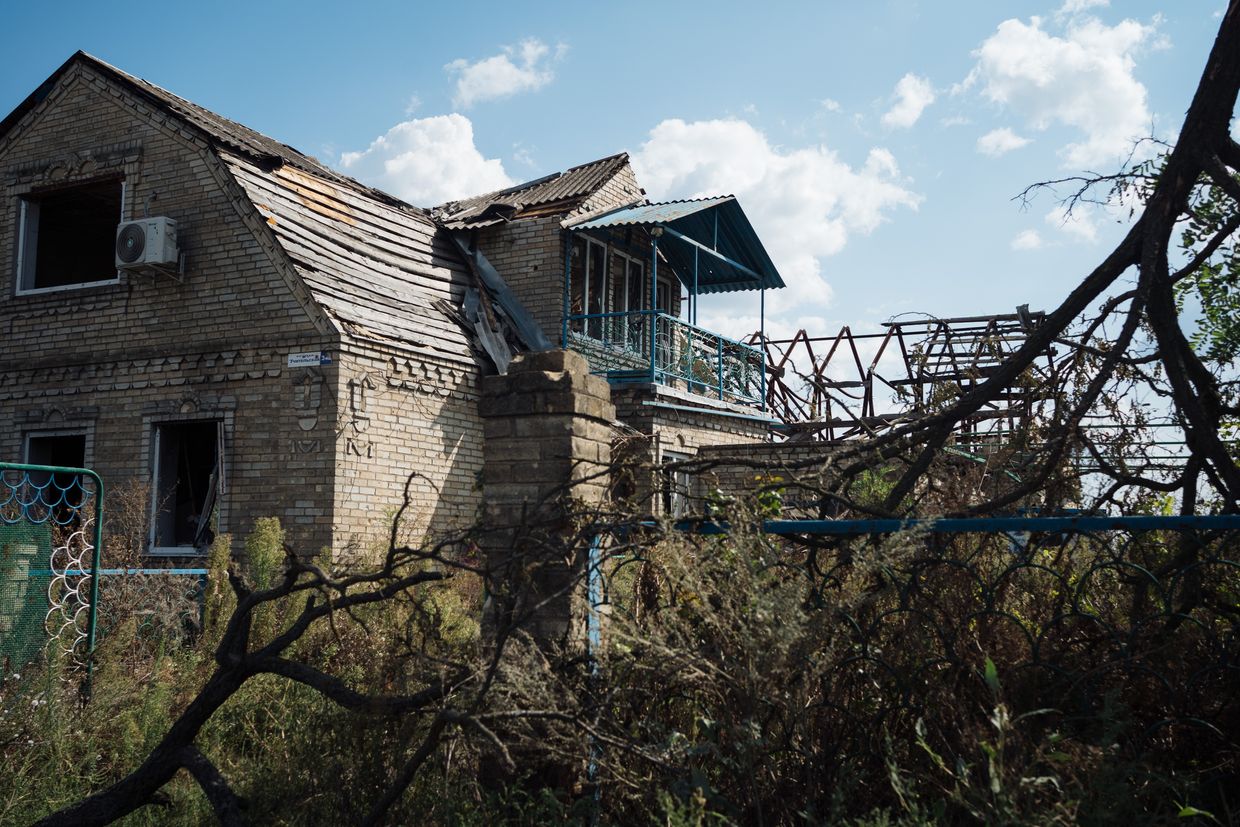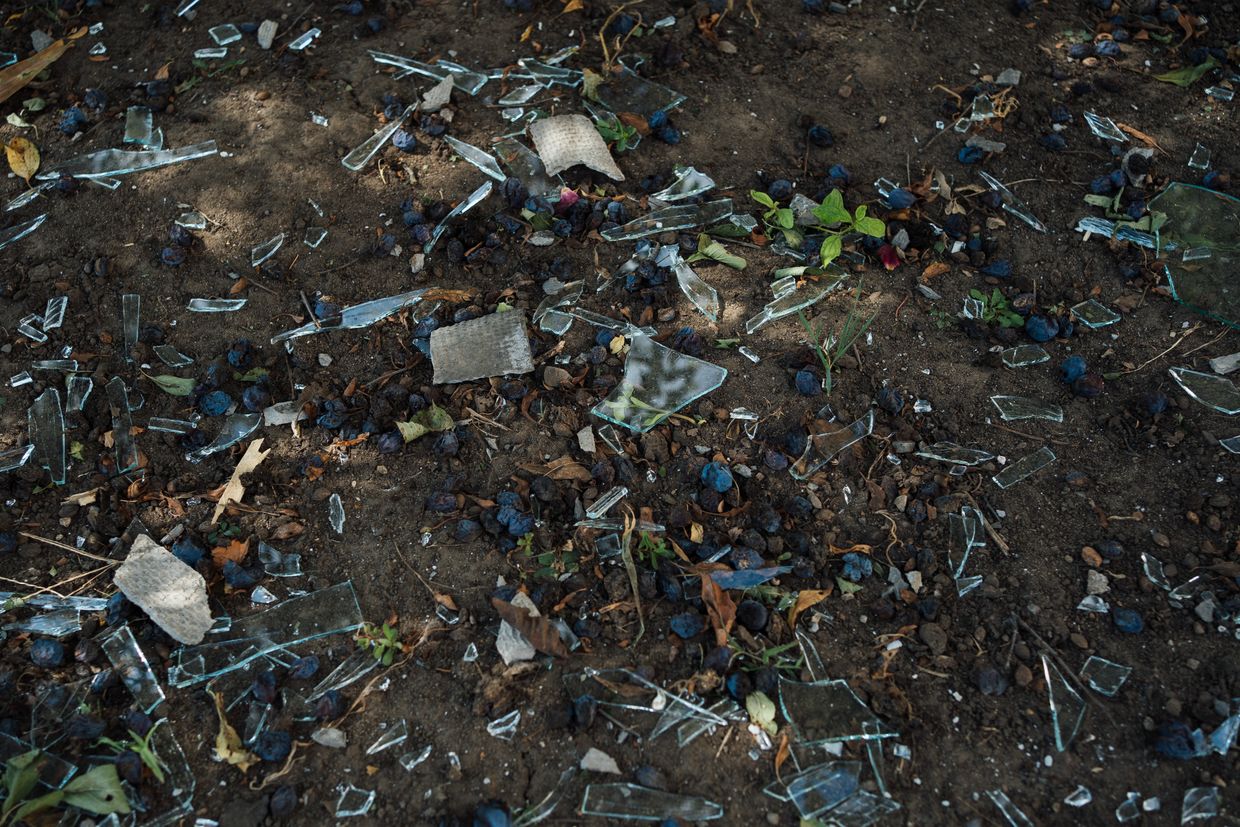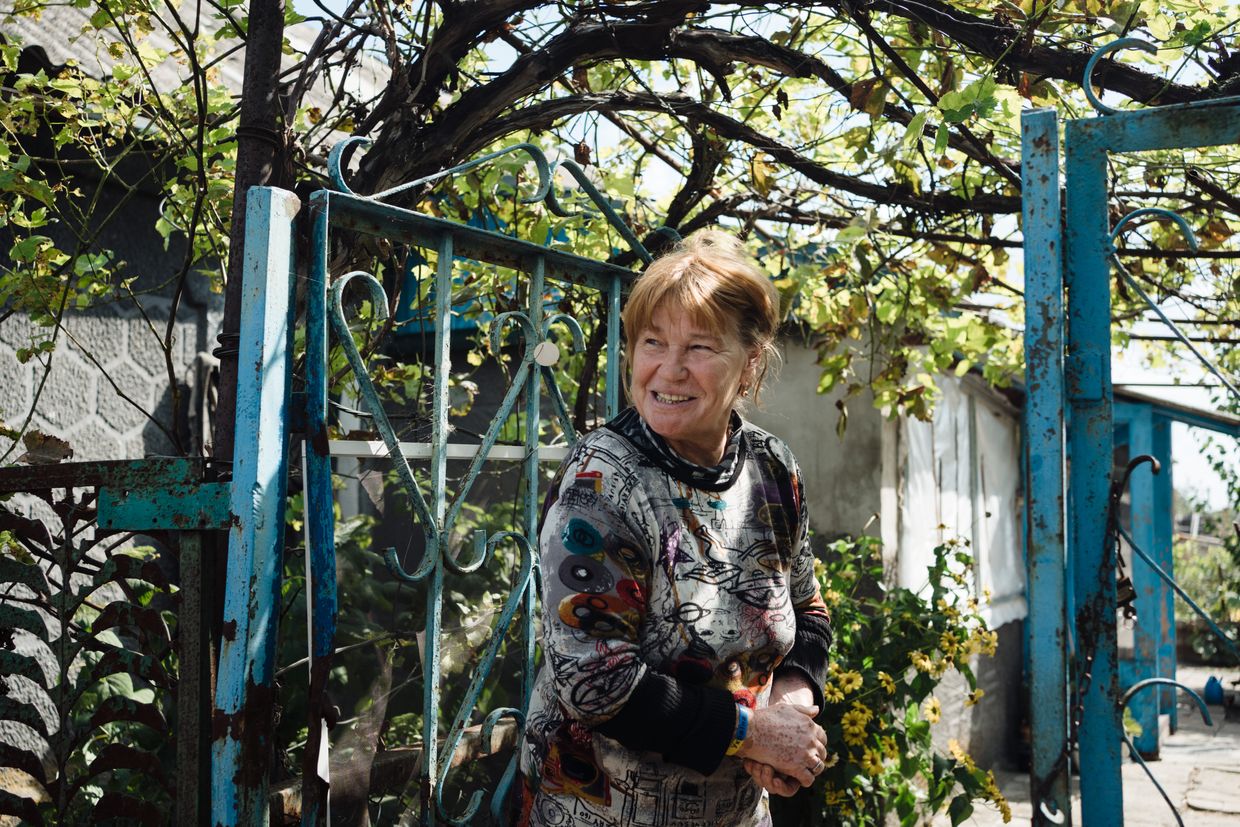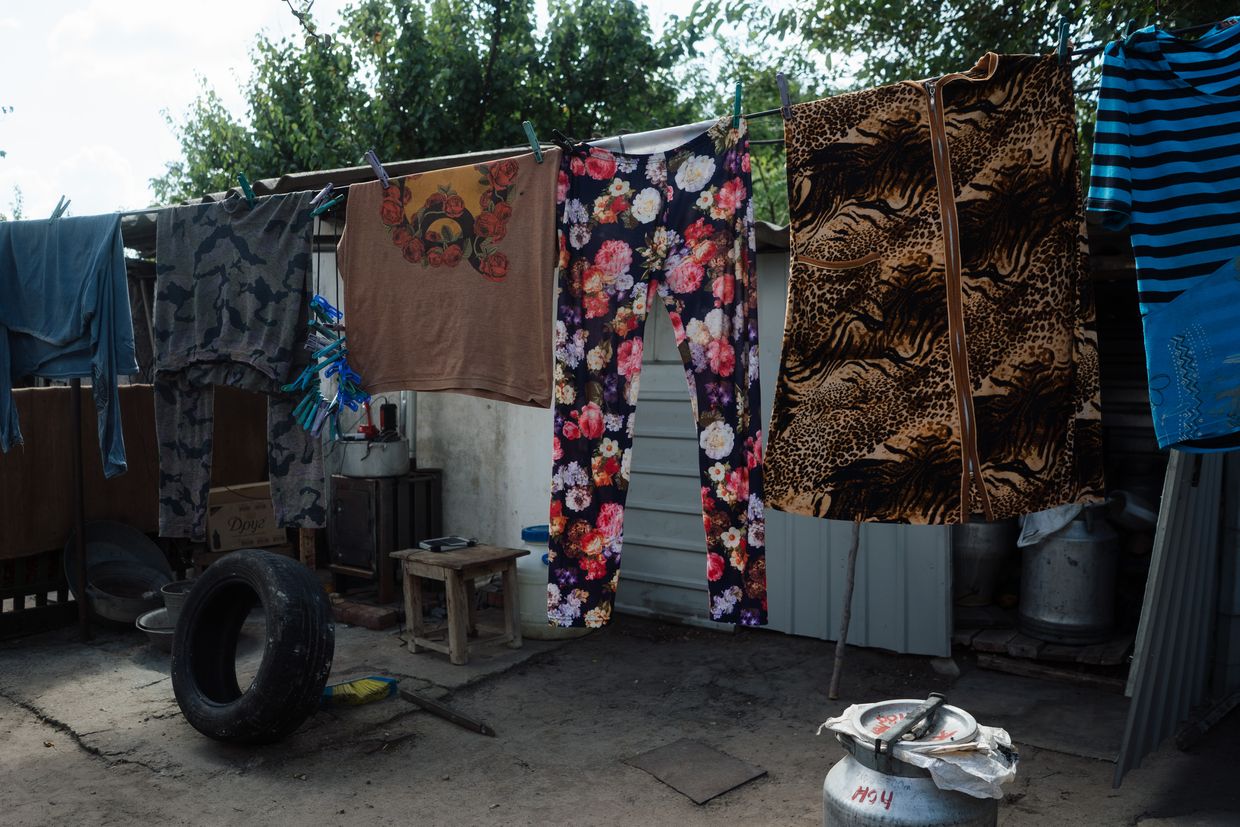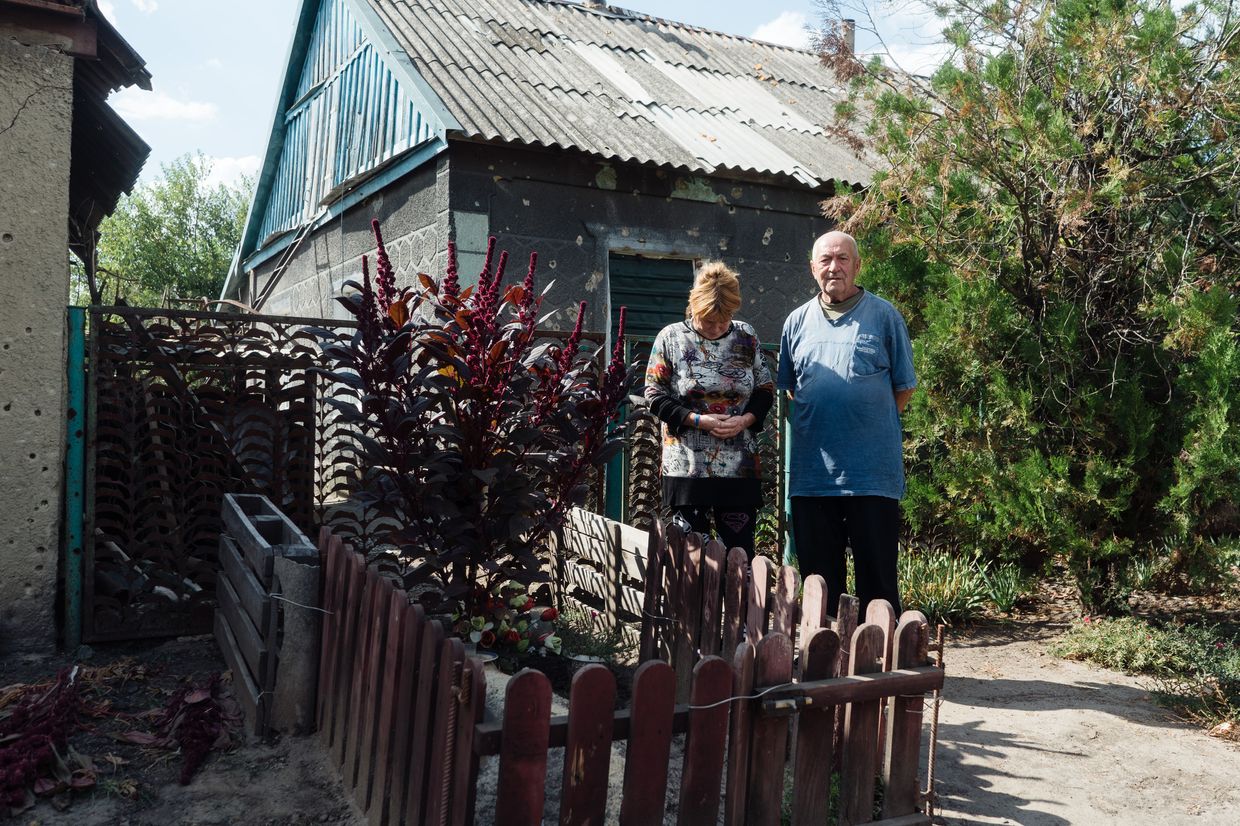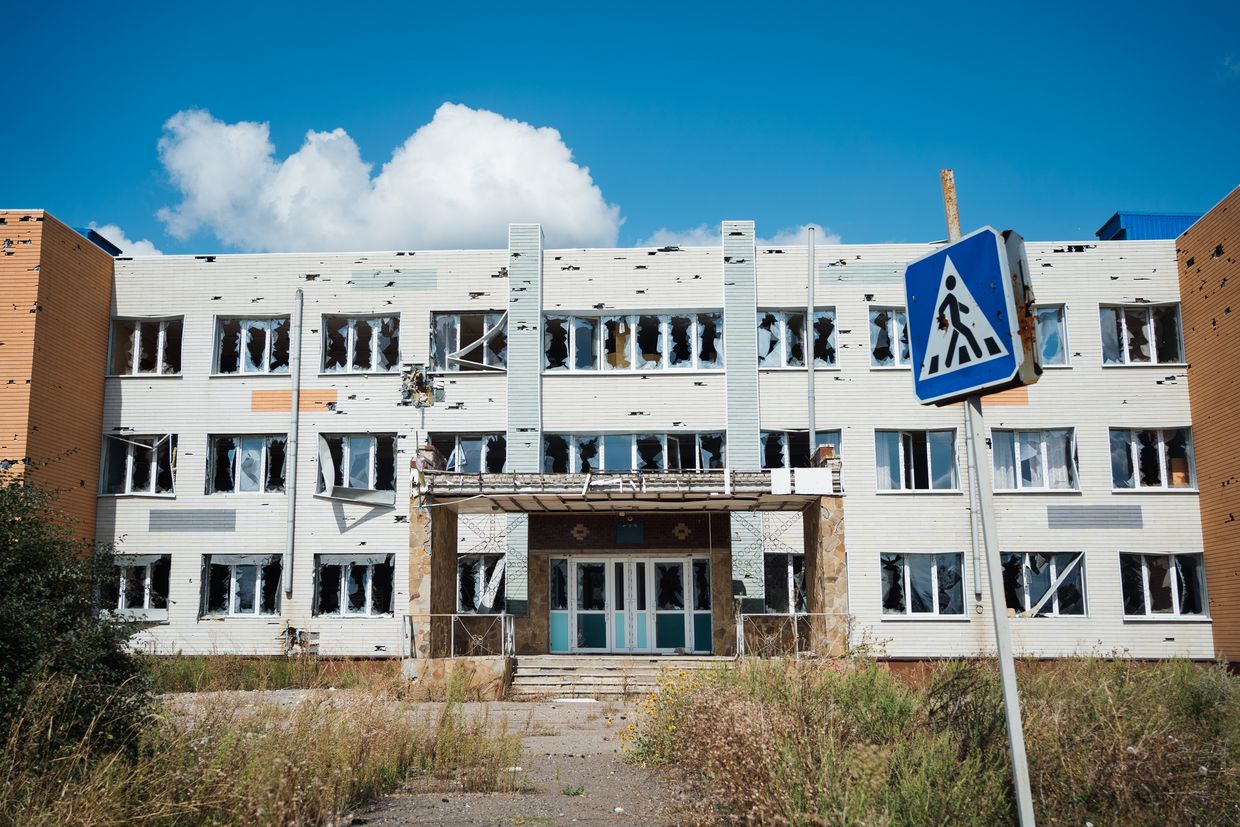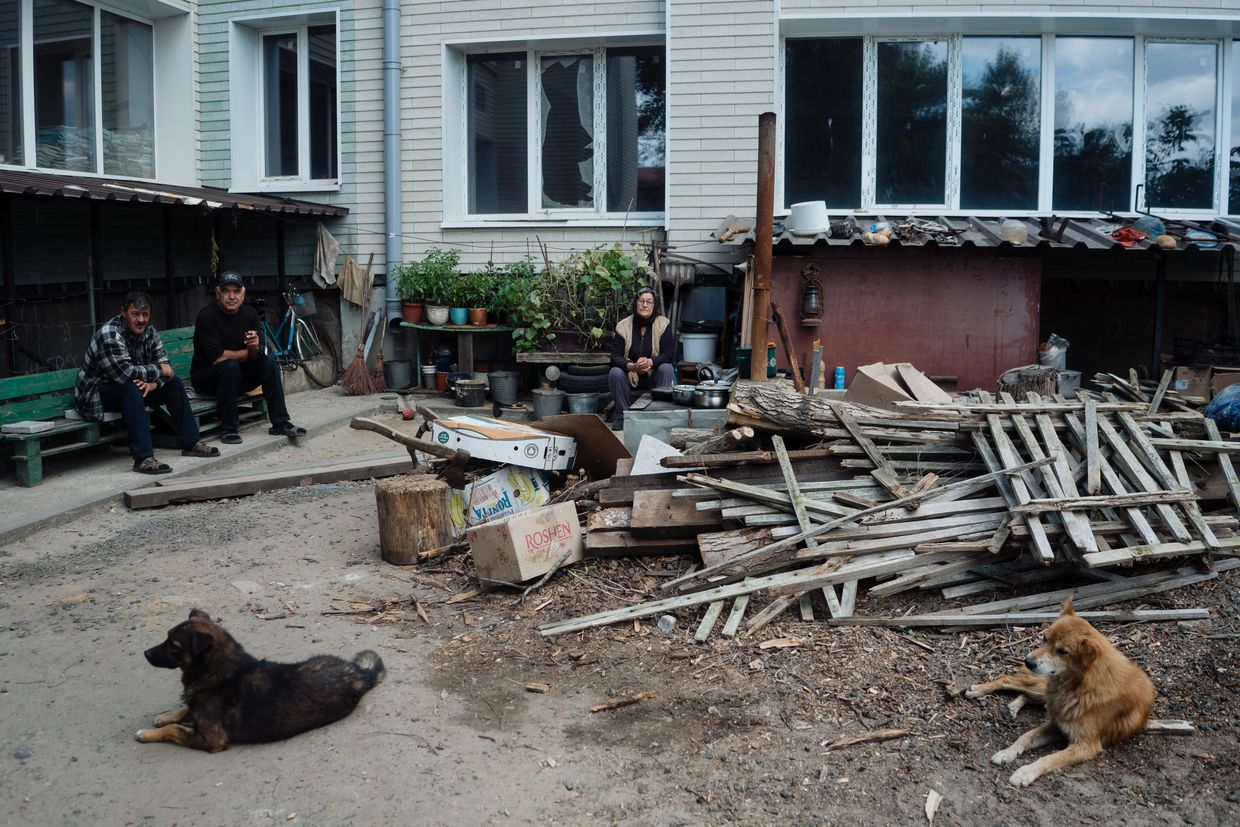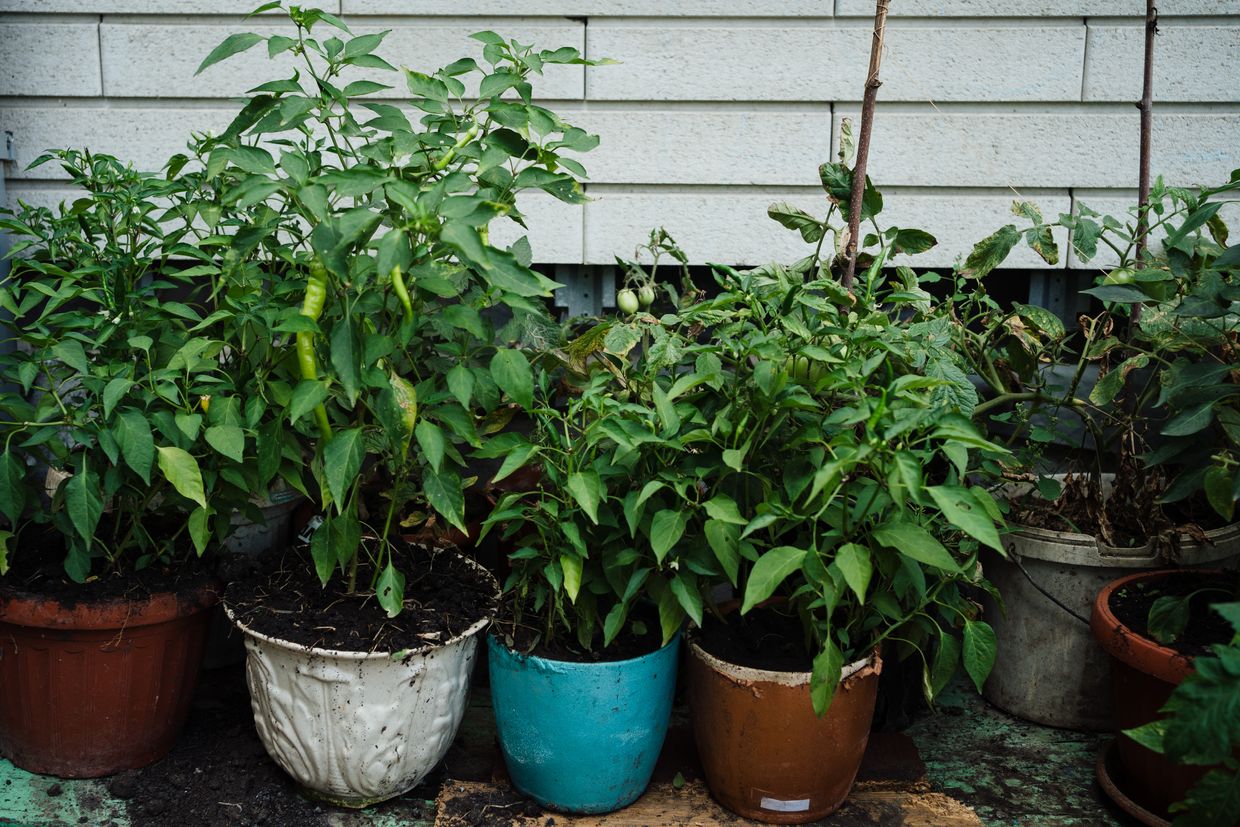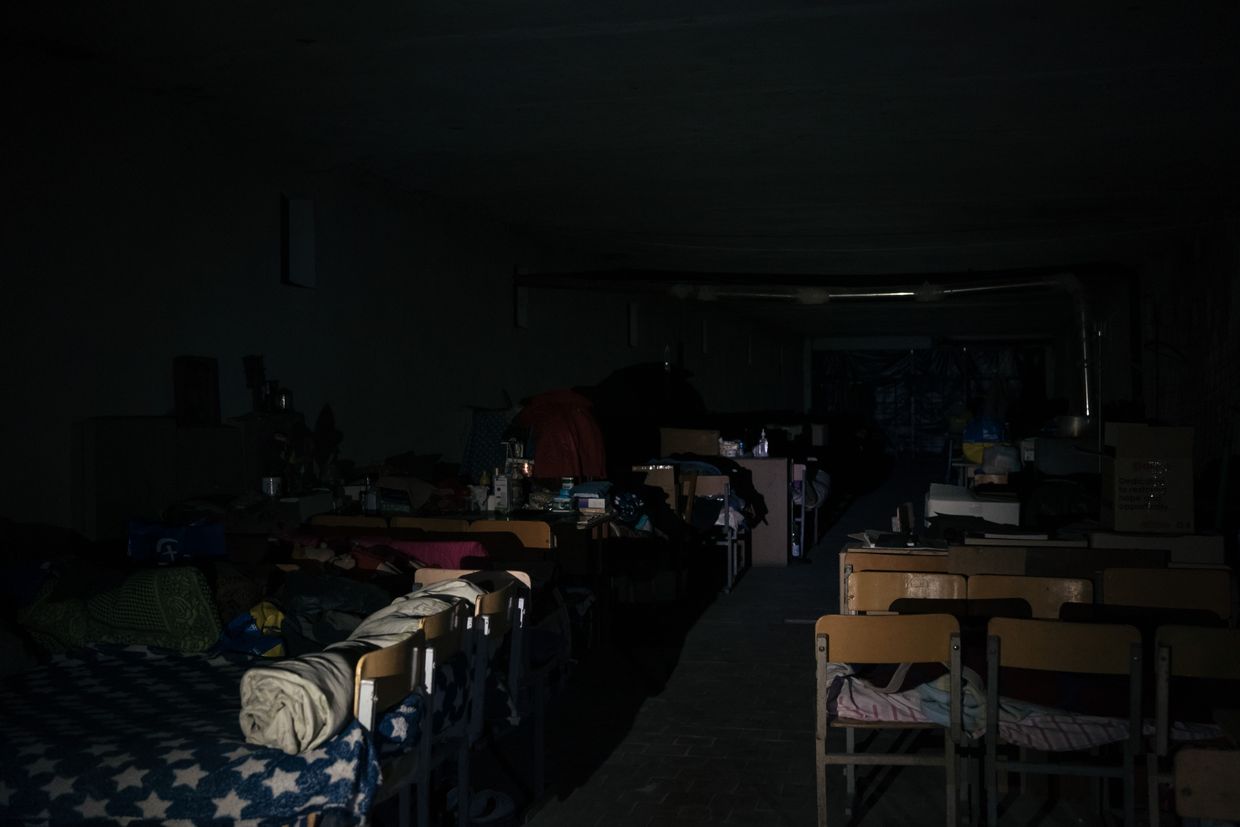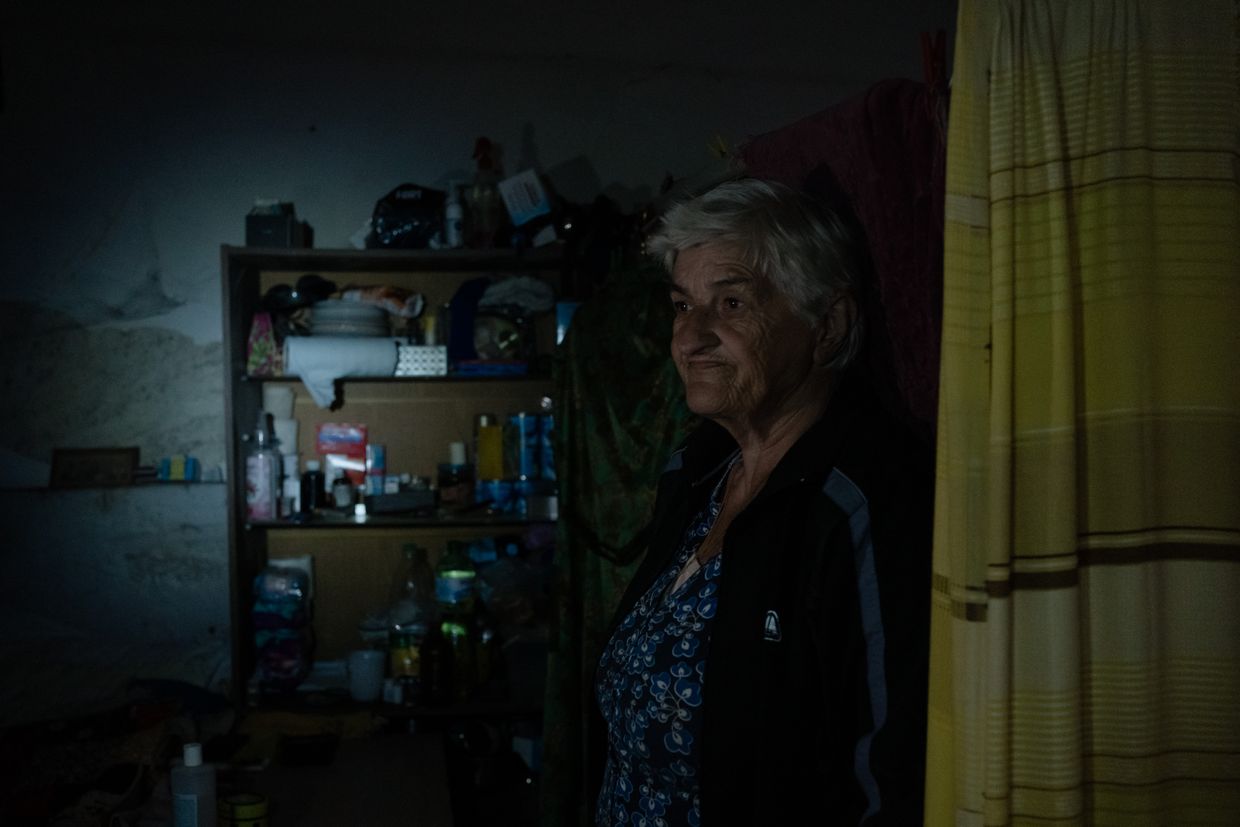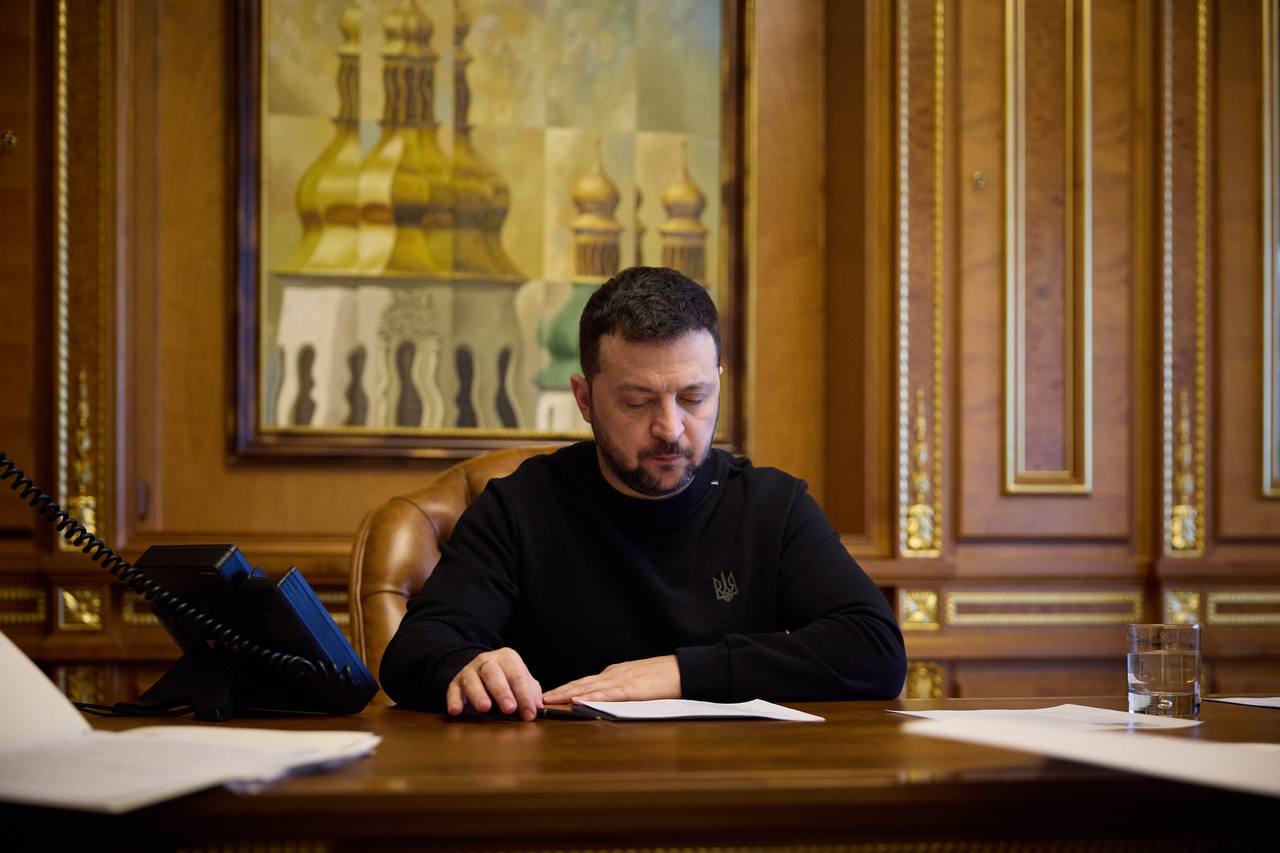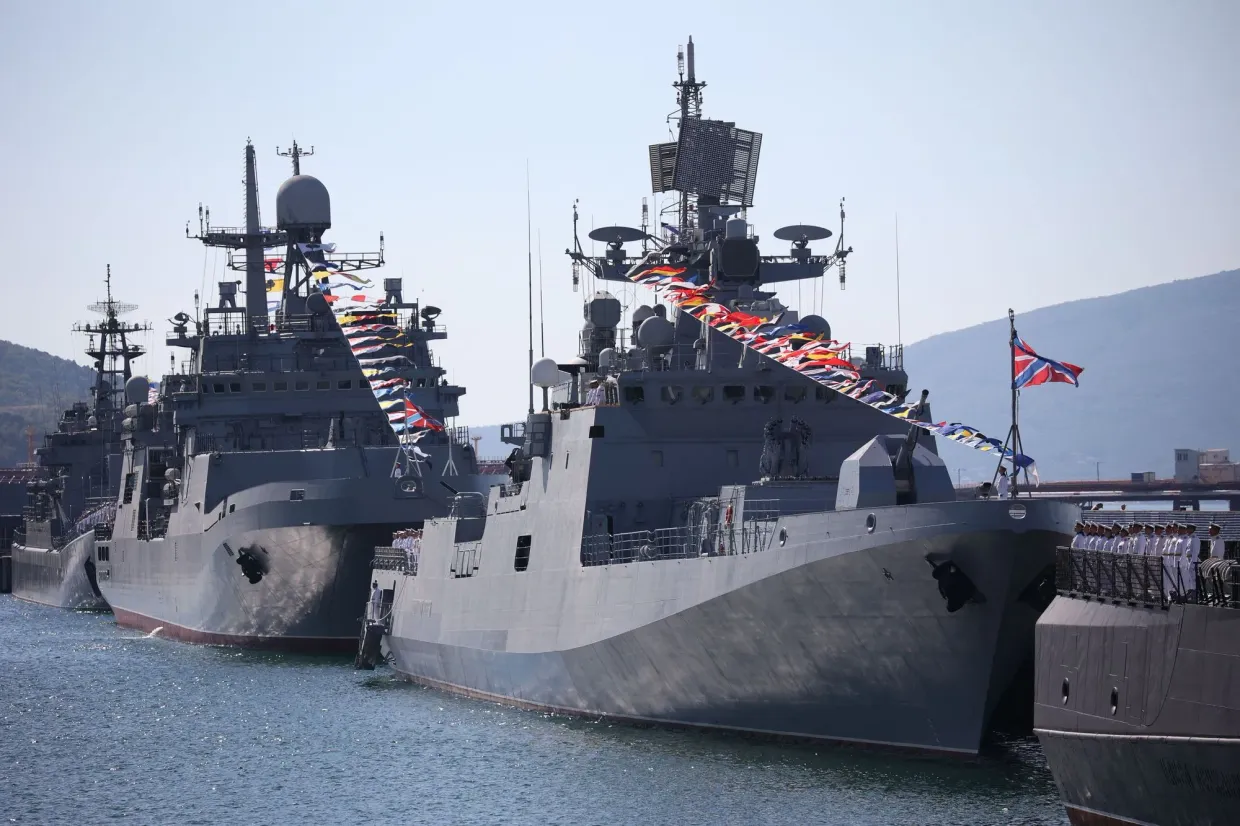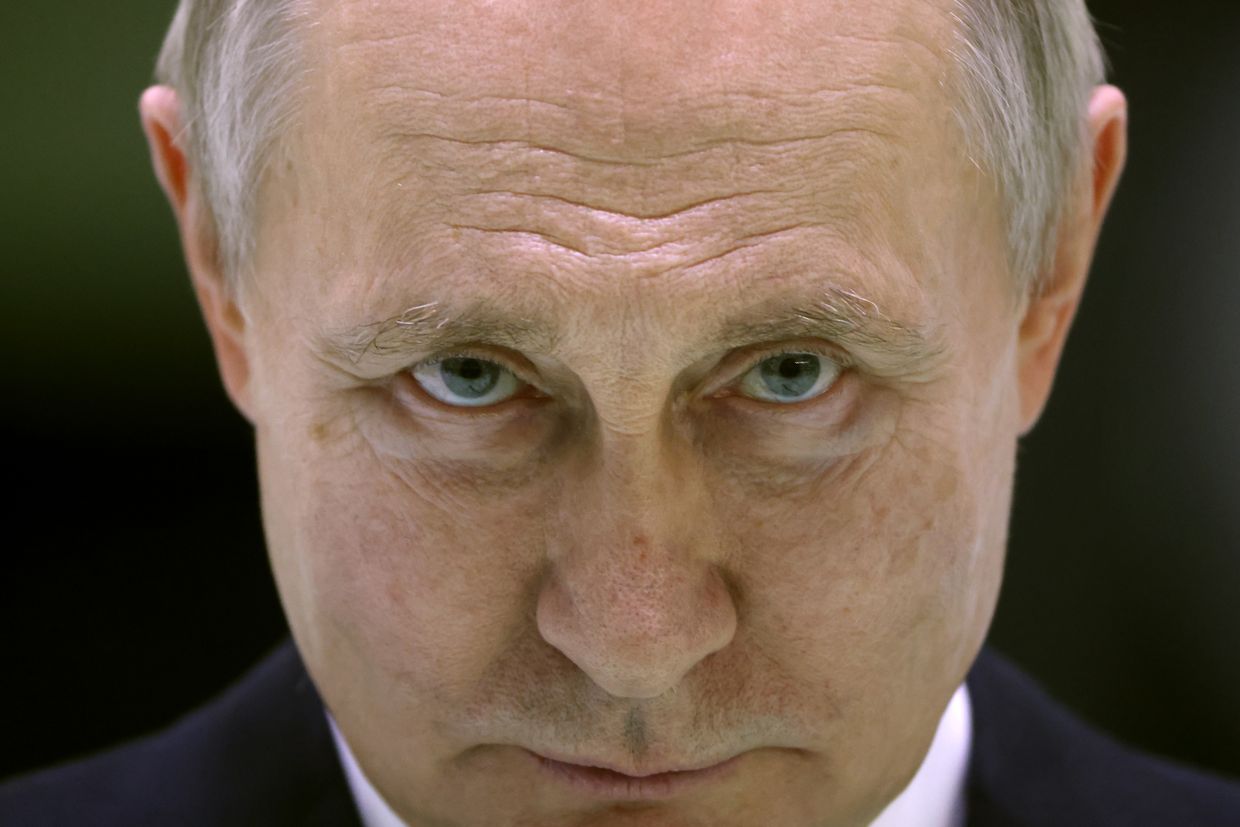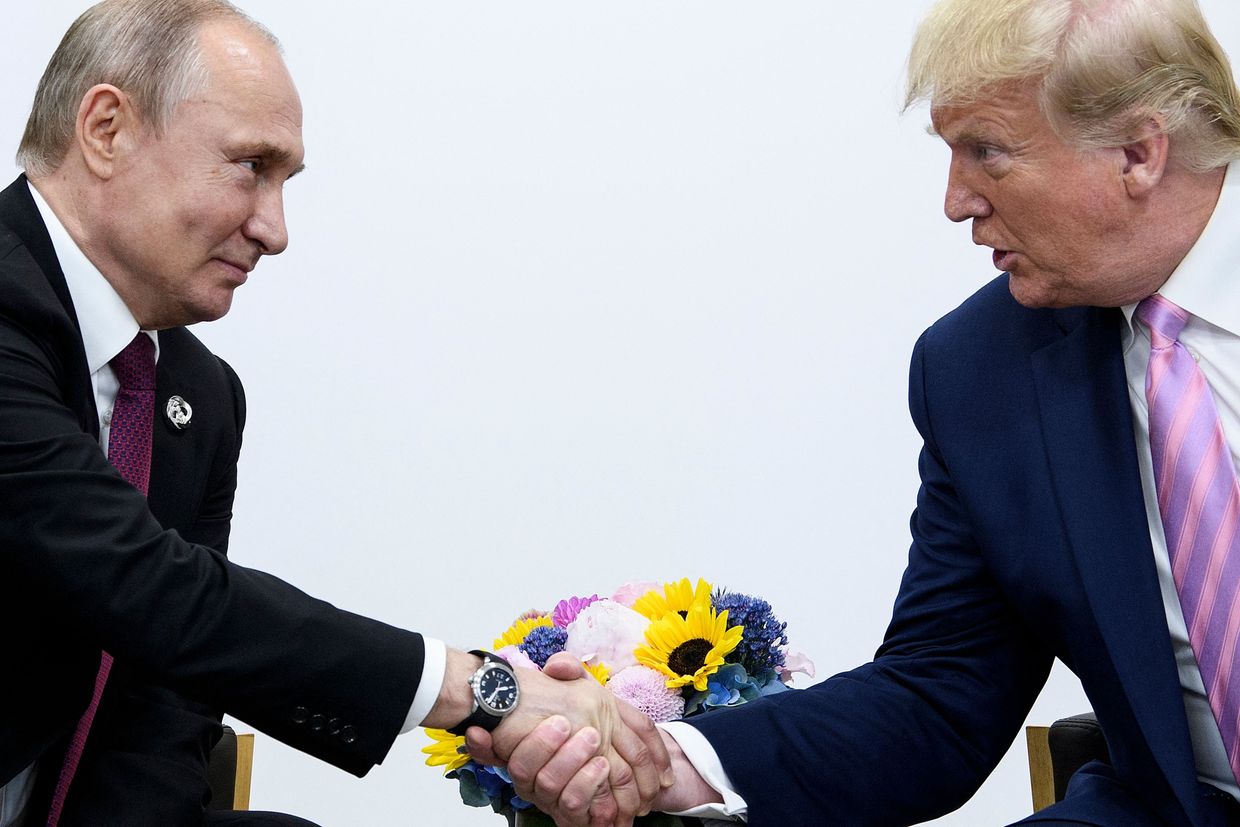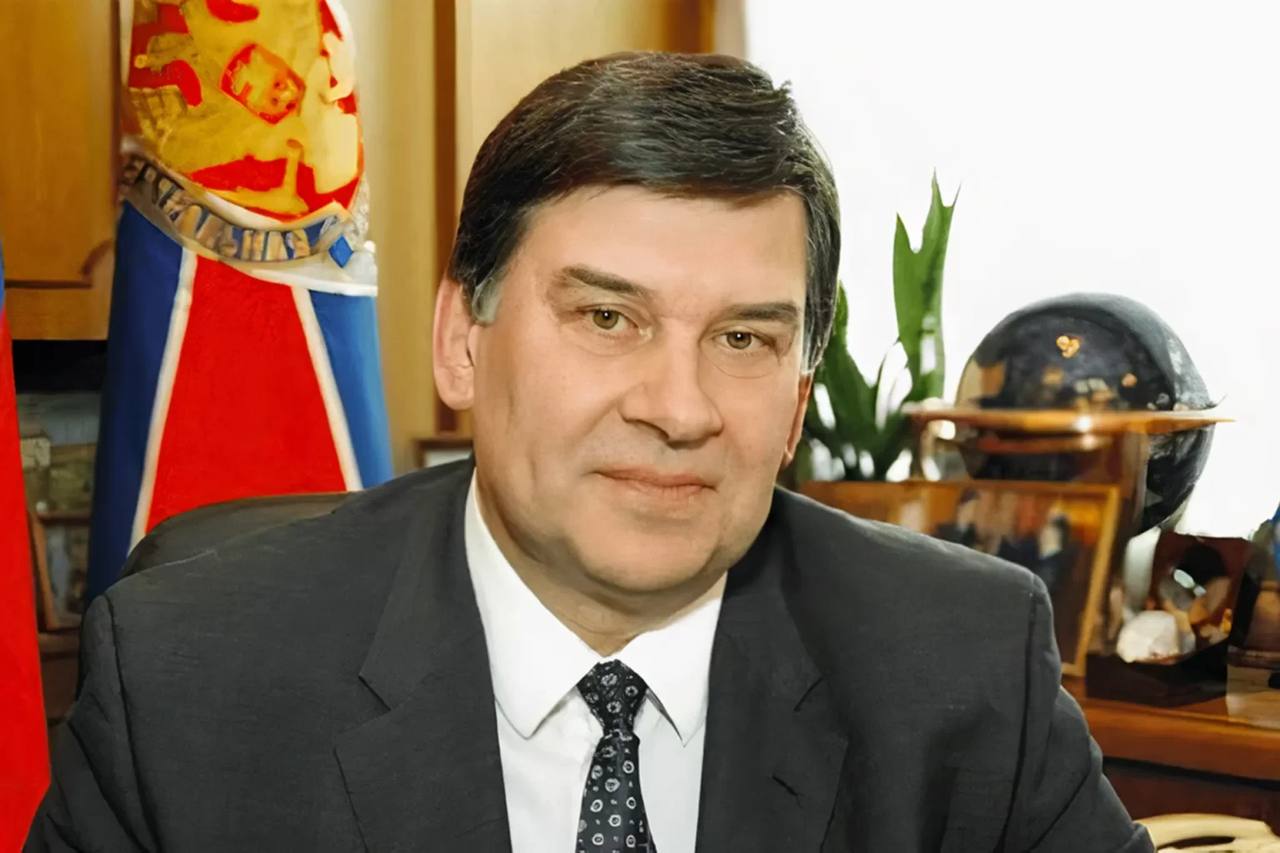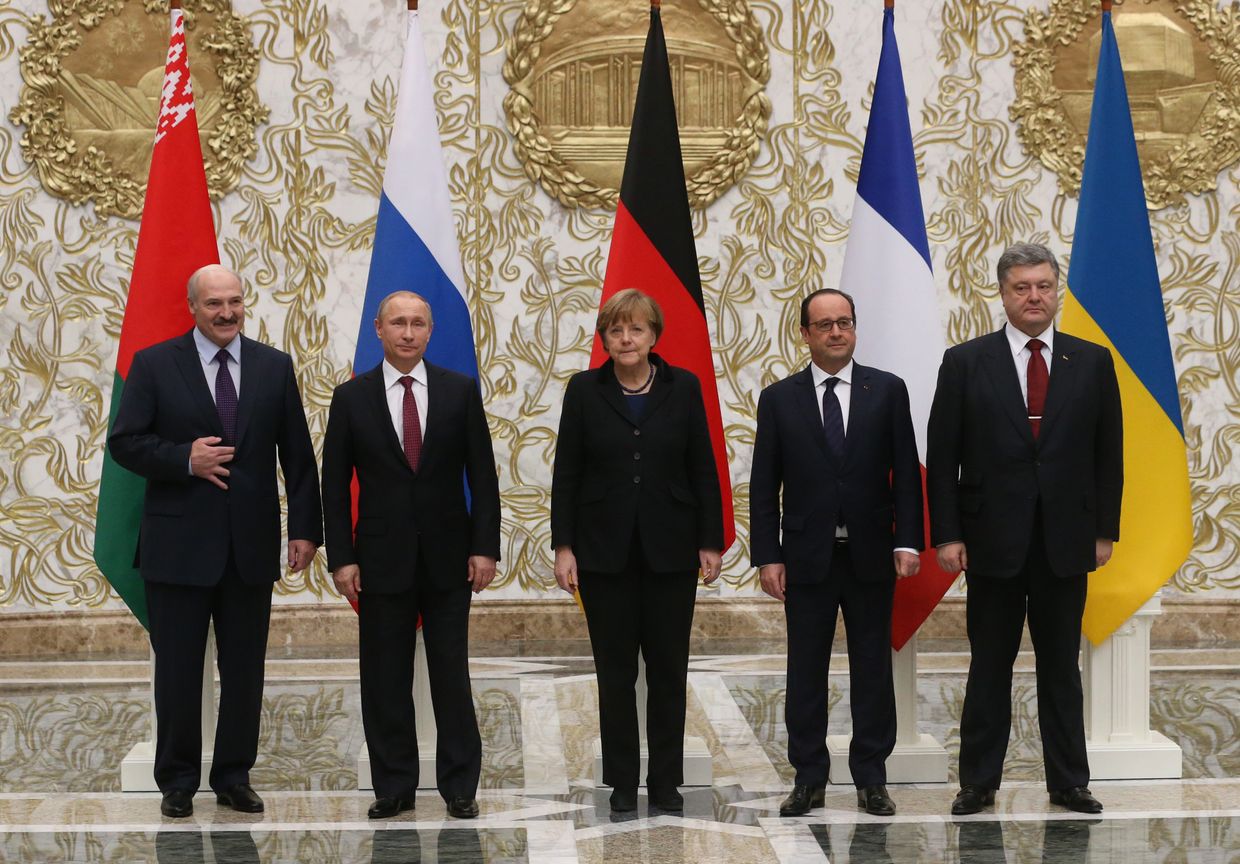NESKUCHNE, DONETSK OBLAST – Vitalii Ivanov stepped gingerly across the messy floor through the kitchen to what was once the living room of his family home.
Scattered across the floor and countertops were the iconic markers of a space that was once occupied by Russian soldiers. Cardboard military ready meals complete with unopened packs of tasteless crackers, a torn jacket with the deep green sludge of Russian pixel camouflague, and general filth throughout the room.
It wasn’t Ivanov’s first time back since his village of Neskuchne was liberated by Ukrainian forces in the first days of the summer counteroffenisive. What was once his proud family home, a comfortable brick two-story, now boasts a great open wound from a direct shell or rocket hit.
“Everytime I came here, I had to leave early because of shelling,” Ivanov, 36, told the Kyiv Independent outside. “The Russians watch everything from drones and this area remained in artillery range until recently.”
The first time Ivanov was able to visit, he found two mines left deliberately by Russian troops near the entrance of his home: one anti-personnel mine, and one anti-tank mine rigged with a tripwire. Soldiers helped Ivanov remove the mines, but more may still lurk deeper in the house. He watches every step carefully.
Not only was this part of western Donetsk Oblast chosen as one of the main axes of the summer counteroffensive by the Ukrainian command, it was here that Ukrainian forces found the most initial success, taking village after village along the Mokri Yaly River in quick succession over June.
Driving through the empty streets of Neskuchne, “liberation” does seem like a strange word to use.
The settlements retaken by Ukrainian forces this summer look nothing like those from the counteroffensive successes last year: no celebrating civilians, no testimonies of war crimes; almost nothing, and nobody, at all.
No civilians are living in the village, according to Ivanov, who works to provide other civilians in the nearby areas with humanitarian aid as well as support with medicine, building materials, and evacuation.
“Intact houses… in Neskuchne?” said Ivanov, “I haven’t seen any.”
Worse than the outside destruction, the village remains loaded with Russian landmines, rigged throughout the houses, streets and fields of the area in anticipation of a Ukrainian advance.

Neskuchne, Storozheve, Blahodatne, Makarivka, Staromaiorske, and finally Urozhaine: each of these Ukrainian villages represented a small triumph for Ukrianian forces advancing in summer along the banks of the Mokri Yaly.
But the village names are also additions to the grim list of Ukrainian settlements whose population has been reduced by Russia’s war to zero.
By mid-July, local authorities had announced that the handful of remaining residents of the liberated villages in the Velyka Novosilka area had all been evacuated.
With winter approaching and the front line moving less and less over recent weeks, it has become clear that a quick victory in the south is beyond realistic. In the meantime, the scars left by the old front line threaten to remain for much longer after liberation.
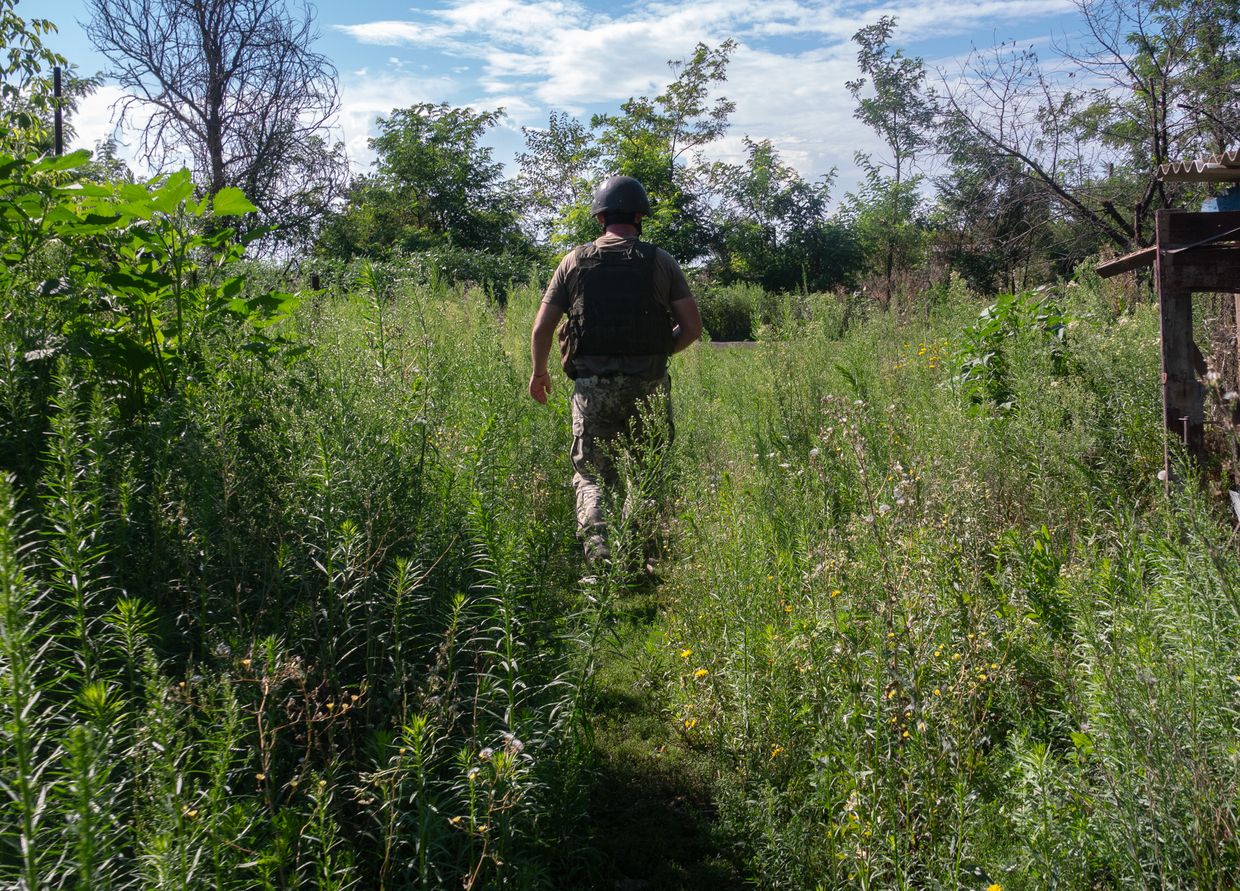
A village no more
Invading Ukraine from three directions in February 2022, it was in the south where Russia had the most success taking territory, as Ukrainian forces’ defense buckled in the face of the same Russian blitzkrieg tactics that failed around Kyiv and Kharkiv.
In this sector of the front line, the story of Russia’s advance was one of a chaotic Ukrainian retreat through the open fields of the south, finally regrouping and digging in when reinforcements arrived. In this sector, it was just outside Velyka Novosilka where Ukrainian forces held the line.
“It’s a good thing they stopped here, they could have gone further,” said Ivanov, who had joined a local civil defense militia at the onset of the full-scale war, helping with policing and humanitarian duties as Russian forces approached his home.
The house was home not only for Ivanov but for much of his extended family. He and his brother Artem, a firefighter, are well-known in the area for their constant efforts to help locals, but not all of the family made it out before Russian troops arrived. Artem’s mother-in-law stayed at first, only later leaving to live in occupied Donetsk.
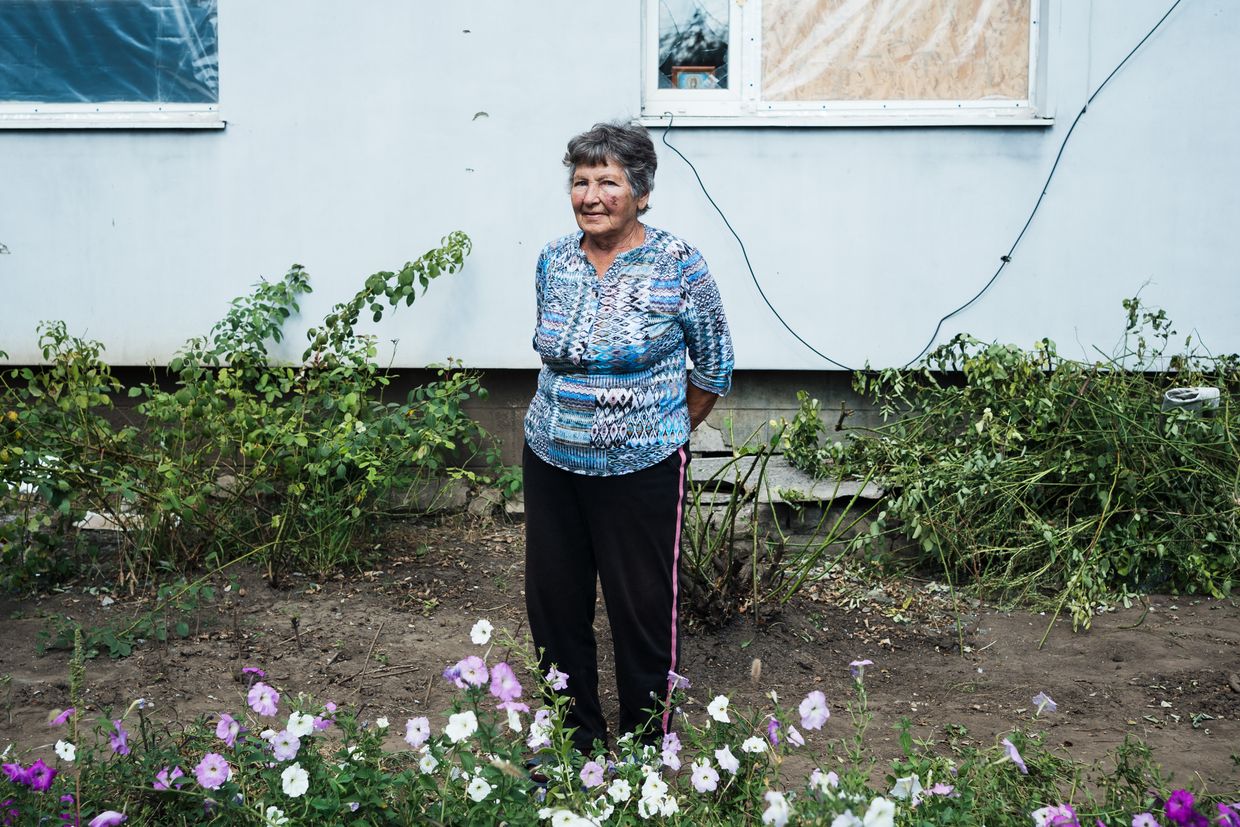
Halyna, an 84-year-old native of Neskuchne who declined to give her last name, had left her home in January 2022 in an attempt to take her sick husband to the hospital. Declared unfit for transport, the husband died just a few weeks before the full-scale invasion, while Halyna remained in Velyka Novosilka, now living in the basement of a three-story apartment.
For over a year, while Ukraine found success in counteroffensives in Kharkiv and Kherson oblasts and Russia threw itself upon Bakhmut, the southern front line barely moved, with Russian forces laying dense minefields and digging multi-layered defensive lines.
In June, after months of anticipation, Ukraine finally hit back. Liberated on June 10, Neskuchne was the first in a string of settlements which saw the Ukrainian flag once again flying this summer.
Despite living just a few kilometers away, Halyna hasn’t yet been able to even see what is left of her home.
“The house is ruined. The roof is gone, the windows are gone…right?” she said, looking at Ivanov, who had been able to check for her.
With the front line still only nine kilometers away, the only demining in Neskuchne has been done by the military, strictly to clear roads and other areas for Ukrainian forces’ immediate use.
If the situation improves, demining efforts by the State Emergency Service and other non-government groups could commence. But with the density of mines and other unexploded ordnance in the area, resurrecting the village from the dead is not an immediate priority compared to other parts of Ukraine where life has returned.
“My mood? Everything is bad,” said Halyna.
“I came here with my sick husband, in January I buried him, and in February the war began. My soul is just empty.”
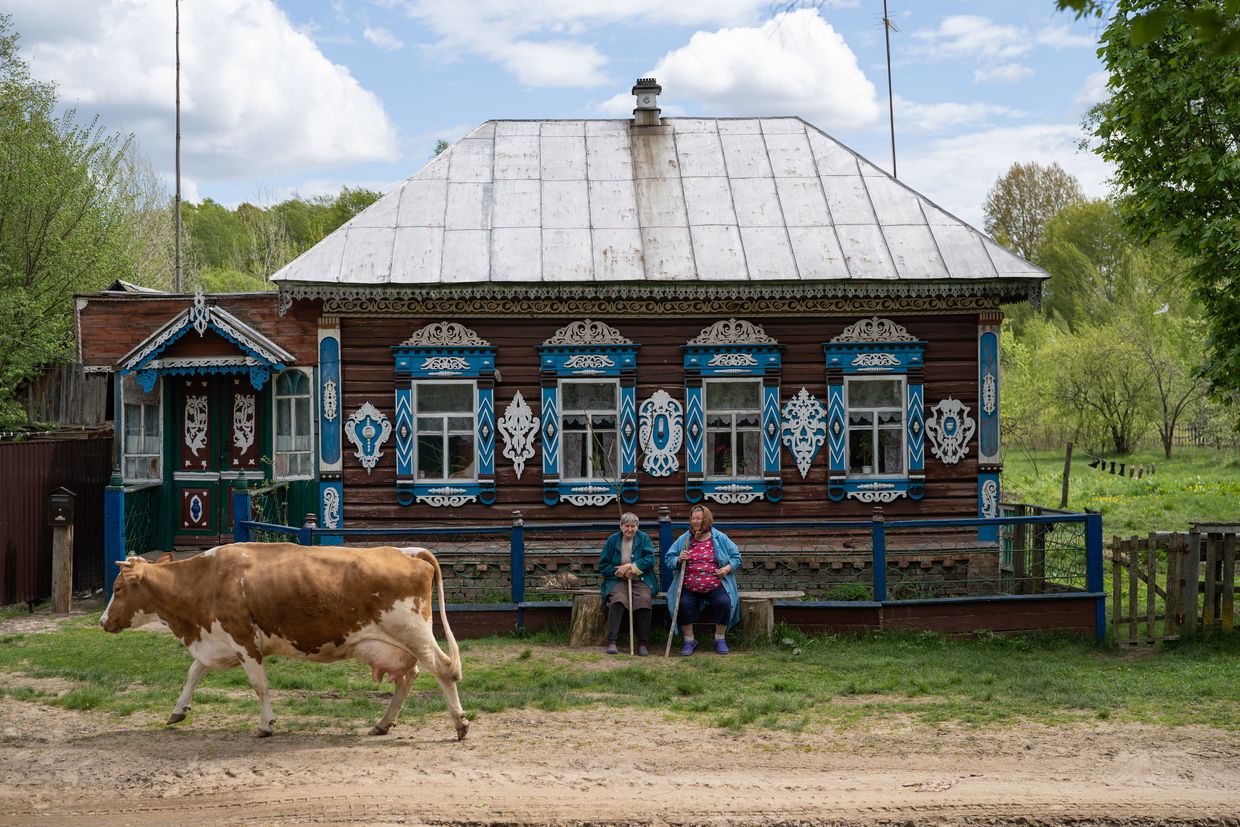
Hope for return
On a map, there is no clear distinction between Neskuchne and the next settlement to the north, with houses lining the road along the kilometer-long stretch of road to the village of Vremivka.
On the ground, that short stretch of road means a world of difference. For over a year between Russia’s capture of Neskuchne and its liberation, the front line ran right across this road.
Even four months after Russian forces were pushed out of this area, the scars left by where the old front line once ran make a world of difference.
In Vremivka, which was never occupied by Russian forces, life — of 14 civilians to be precise — has clung on against all odds.
In the early autumn sunshine, the yard of Liubov Bezverkha’s village house looks almost untouched by war, decorated with flowers, grapevines, and a small, carefree dog.
This is no coincidence or stroke of luck: the house, garage, have been consistently repaired after any damage, a tribute to its residents’ fierce resolve to stay and survive.
Liubov, 65, and her husband Mykhailo, 71, who recently celebrated their 47th wedding anniversary together, were in a cheerful mood as they spoke to the Kyiv Independent.
“When there was a M777 (U.S.-made howitzer) nearby here, it was very loud.” said Mykhailo. “Now, it's quiet, but they are just still shooting.”
“At first it was boom boom boom here, then boom boom boom a little further away, and then further still,” added Liubov. “Now, most of what we hear is going in their (Russian) direction.”
Outside the house on the street, a wooden cross marks the grave of Liubov’s mother, who died in their home last summer after stress from the constant shelling induced a stroke. Liubov is determined to make it through to a life without war.
“I want to die of my own death, not from a bullet or shrapnel.”
Further north, the remaining population in the town of Velyka Novosilka, once home to 5,000 people, is finally given a chance to exhale after 14 months on the front line.
The courtyard of the town’s School No. 2 is a hive of activity. One elderly resident dismantles window for firewood, another tends a tomato plant, while two others sit on a bench with cats on their laps.
Facing north, the courtyard is well-protected from Russian shelling by the school building, which has suffered a couple of direct hits since the counteroffensive began.
“We live as we have so far, we try to survive, try to help each other,” said 46-year-old music teacher Iryna Babkina. “The front line moved away a little but it's still loud around here.”
Lined with mattresses resting on classroom chairs, the school’s basement system once housed over 100 people at the onset of the full-scale war, but now just over 20 remain. All the children have long been taken by their families to safer areas.
The inhabitants of the school are adamant to stay over winter, now that the worst seems to be behind them, preparing for another season of wood-burning stoves, generators, and a dependence on volunteers for food and fuel.
“We will spend winter the same way we did last time, we have done this already,” said Babkina.
“A lot of the people here just simply have nowhere else to go; their houses are destroyed.”
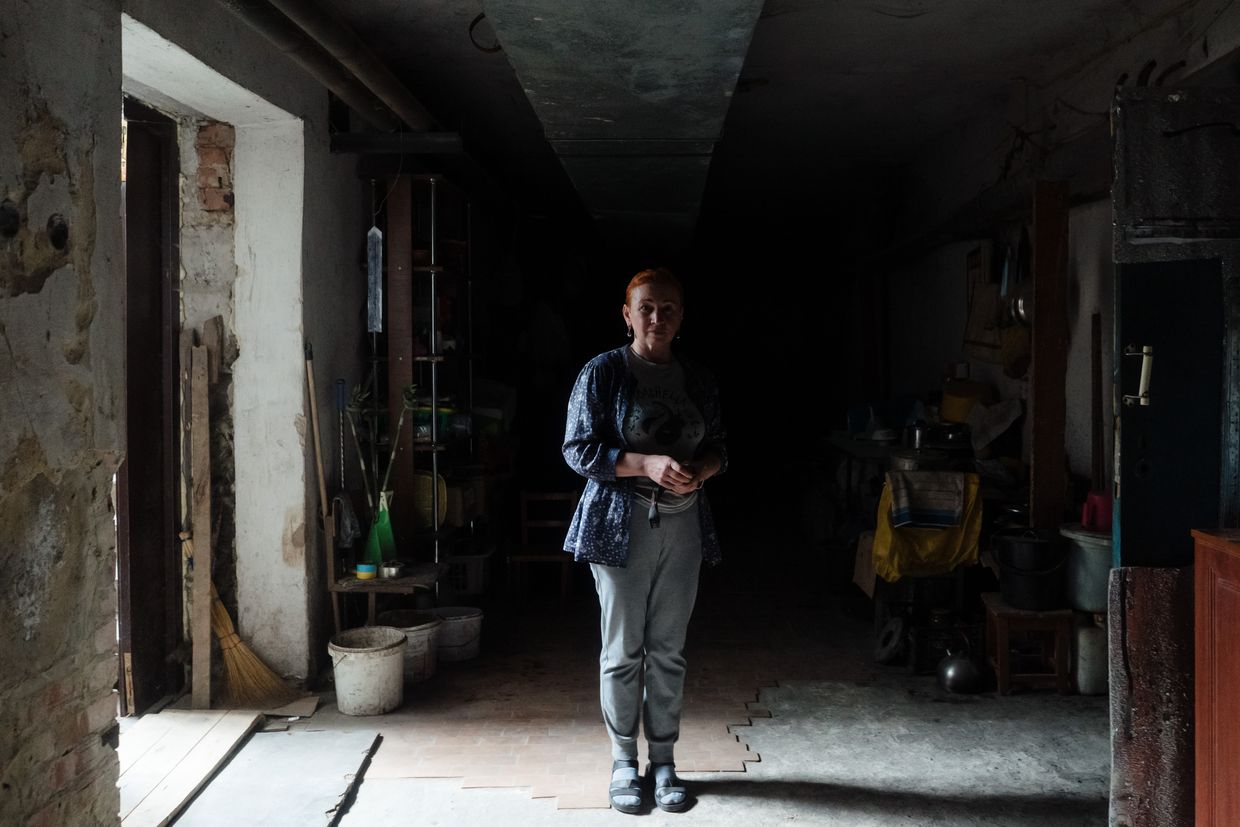
As hard as life may remain here, Russian troops never managed to enter Velyka Novosilka and mine it like they did just down the road in Neskuchne.
“There is hope, even a lot of locals that know from here are now thinking of coming back,” said Babkina, “but we tell them not to, it's still early.”
When the time comes, Babkina holds out the school pianos that she once taught on will be played once more.
“They are just very out of tune, the shockwaves have knocked them about a fair bit, but everything can be fixed,” she said.
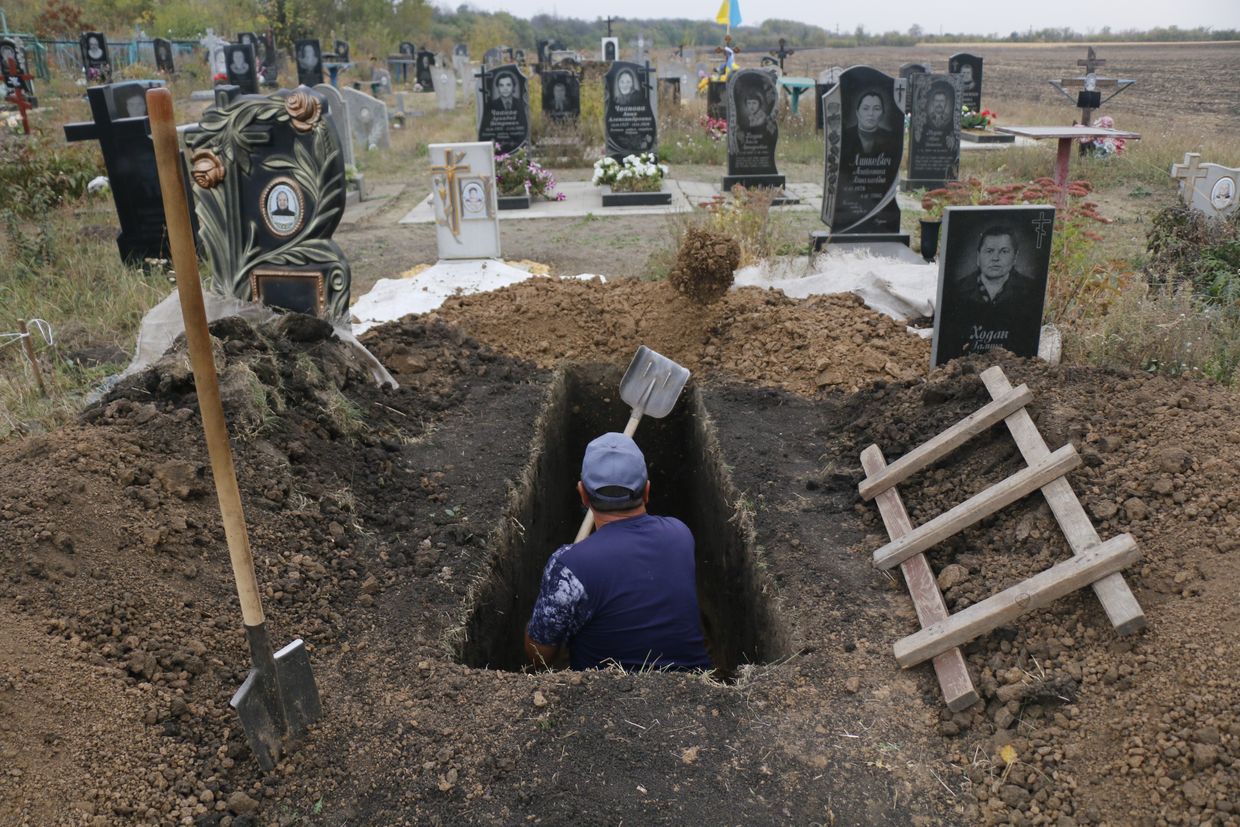
Wait and see
Halyna is also prepared for the winter, pointing proudly to the little gas heater in her basement room. She still hopes one day to be able to return to Neskuchne, where she moved with her husband 20 years ago specifically for its picturesque setting.
“It was so beautiful, you had the river, the children's summer camps, the pine trees, and the people were good.”
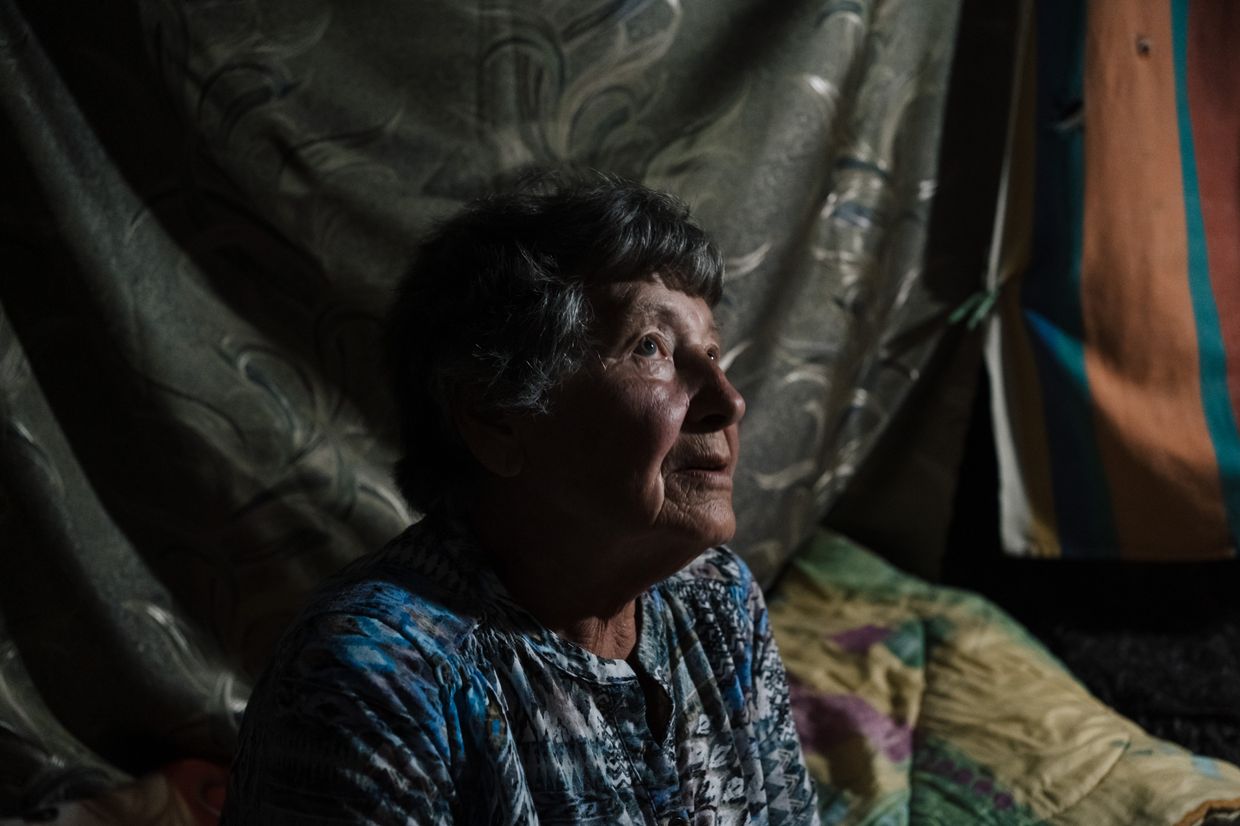
Looking around at his mangled house in his dead village, the usually upbeat Ivanov can’t help but get a little sentimental.
“I want to bring it (home) back to life and fix it up, but there is a problem,” he said.
“How can you create a family here when you are always watching that nobody takes a wrong step to the left or the right? You can't go to the forest or the river, who knows what will remain there?”
Going forward, Ivanov said, the chance of life returning to villages like Neskuchne depends greatly on the future movement of the front line.
“If the line moves at least beyond Krasna Poliana (35 kilometers southeast of Neskuchne), then people will start returning to Vremivka and Novosilka,” he said, “but so long as regular rocket artillery is still hitting these places, probably not.”

The day after speaking to the Kyiv Independent, Ivanov went, as earlier planned, to enlist at his local recruiting office.
For someone who spent over a year helping locals in any way possible as Russian soldiers lived in his home just a stone’s throw away, this is the logical next step, he said.
“I didn't ever see myself in life as a soldier,” he said, “but I see what is going on at the front line and there are less and less people wanting to go... but someone has to.”
The Kyiv Independent is grateful to our members and donors. This story wouldn't have been possible without a donation from The Charles Douglas-Home Memorial Trust.
Note from the author:
Hi, this is Francis Farrell, cheers for reading this article. I grew up on the other side of the world, but in Ukraine I have found a home unlike any other. Just like with so many of our readers, I understand that you don't have to be from near here to realize how important Ukraine's struggle is for freedom and human rights all over the world. The Kyiv Independent's mission is to lead the way in continuing to bring the best homegrown, English-language coverage of this war, even if the rest of the world's attention starts to fade. Please consider supporting our reporting.




